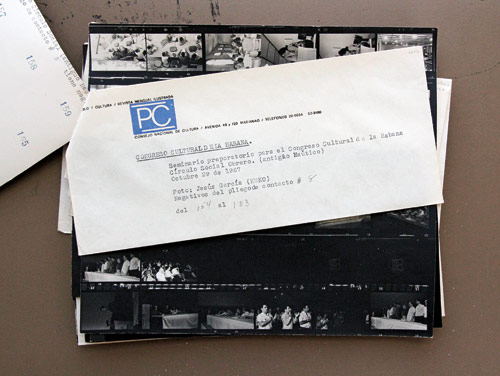2014
Jakob Jakobsen and María Berríos
What is a revolutionary exhibition? Or what can a revolutionary exhibition be? A propaganda machine against the inadmissible present? An investigation into the experimental language of revolution? Does it address change, force change, or is it change itself? In light of the recent uproar against the current crisis of global capitalism, the resurgence of ‘revolution’ as a concrete horizon gives these questions a different toll. A revolutionary exhibition puts the continuous rubble of unfinished revolts to use. It is a struggle with the present, while the actuality of the present continues to be haunted by historical echoes.


The specific resonance we are exploring in The Revolution Must Be a School of Unfettered Thought is the exhibition Del Tercer Mundo [From the Third World], which took place in Pabellón Cuba in Havana in January 1968. It was one of the main public events of the Cultural Congress of Havana – a large-scale gathering that attempted to articulate a language for international struggle against imperialism and towards the decolonisation and liberation of the global south. The Congress aimed to work across disciplines and national borders, bringing together hundreds of artists, writers, gym teachers, poets, scientists, anti-psychiatrists, feminists, black power militants, dentists, economists, philosophers, students and activists from most of the world in an attempt to connect their struggles and revolutionary force.

As a pedagogical exhibition, Del Tercer Mundo strived to map and reflect on the contemporary immiseration of the world while also offering a dynamic portrayal of popular rebellion and resistance. It was a multimedia total installation, applying innovatory audio-visual technologies, creating an integrated and sensual narrative that included neon animations, comic strips, mechanical animated billboards, satirical film mashups, protest dioramas, sound effects and three live animals (a llama and two lions). The point was not to bring the museum to the people, but to use and transmute the language of the street into exhibition form.
A revolutionary exhibition requires a multilayered language that challenges language itself. It must be open to destructive collisions with the present and the on-going immiseration of the already dispossessed. We, as militant researchers, have learned there is a difficult transition from reflecting on to becoming a revolutionary exhibition. It is not enough to gather knowledges around a new subject, it is necessary to construct a new object that cannot belong to anyone. – JJ/MB